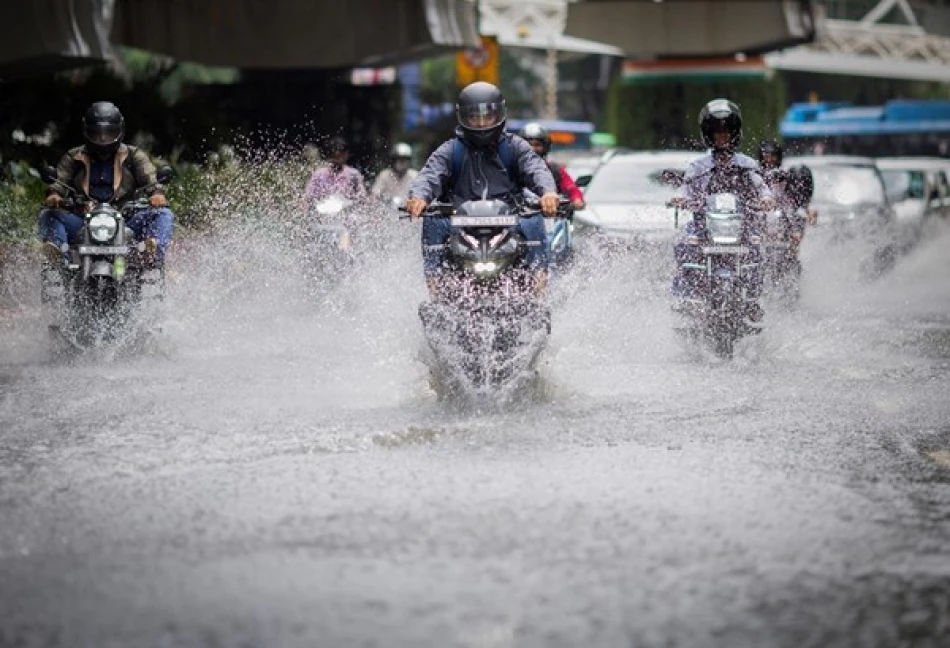
Heavy Rains Batter Delhi, Authorities on High Alert in India
Delhi Drowns in Monsoon Chaos as Red Alert Exposes India's Urban Infrastructure Crisis
Indian authorities issued a red weather alert for Delhi on Tuesday as torrential rains brought the capital to a standstill, creating massive traffic jams and dangerous waterlogging during morning rush hour. The crisis highlights a recurring pattern of urban flooding that costs India's economy billions annually and exposes the fragility of infrastructure in one of the world's fastest-growing major economies.
Morning Commute Turns Into Urban Nightmare
Key commercial and residential areas including ITO, Dhaula Kuan, Naraina, and Patel Nagar experienced severe traffic disruptions as roads transformed into temporary rivers. The waterlogging during peak hours trapped thousands of commuters, with many abandoning vehicles and seeking alternative routes through Delhi's already strained public transport network.
The India Meteorological Department warned of continued moderate to heavy rainfall accompanied by lightning, thunder, and surface winds reaching 30-40 kilometers per hour, suggesting the crisis could extend beyond Tuesday.
A Predictable Annual Crisis
Delhi's monsoon flooding represents a broader challenge facing Indian megacities. Despite decades of urban planning initiatives and smart city investments, the capital's drainage infrastructure remains inadequate for handling intense rainfall events that are becoming more frequent due to climate change.
Economic Impact Beyond Traffic Jams
The disruption carries significant economic consequences. Delhi contributes approximately 4.7% of India's GDP, and each day of severe weather-related disruption can cost the city's economy an estimated $50-100 million in lost productivity, delayed shipments, and business interruptions.
For India's aspirations as a global manufacturing hub under initiatives like "Make in India," such infrastructure vulnerabilities present serious challenges to investor confidence and supply chain reliability.
Regional Context and Global Comparisons
Delhi's struggles contrast sharply with cities like Singapore and Tokyo, which have invested heavily in comprehensive flood management systems including underground drainage networks and smart water management technologies. Even within Asia, cities like Kuala Lumpur have made significant progress in reducing flood-related disruptions through integrated urban planning.
Climate Change Amplifies Urban Vulnerabilities
The intensity of Delhi's rainfall patterns has increased over the past decade, with meteorologists noting more frequent extreme weather events during monsoon seasons. This trend demands not just reactive measures but fundamental rethinking of urban infrastructure design and investment priorities.
As India positions itself as a key player in global climate discussions, the ability to manage domestic climate resilience becomes increasingly important for international credibility and economic stability.
Looking Forward: Infrastructure as Economic Strategy
The red alert serves as another reminder that India's economic growth trajectory depends heavily on solving basic infrastructure challenges. With the country targeting $5 trillion GDP by 2027, cities like Delhi must demonstrate they can handle both economic expansion and climate pressures simultaneously.
The recurring nature of these monsoon crises suggests that incremental improvements are insufficient. What's needed is comprehensive urban redesign that treats flood management not as an afterthought, but as fundamental economic infrastructure essential for sustained growth in an era of climate uncertainty.
 Layla Al Mansoori
Layla Al Mansoori







